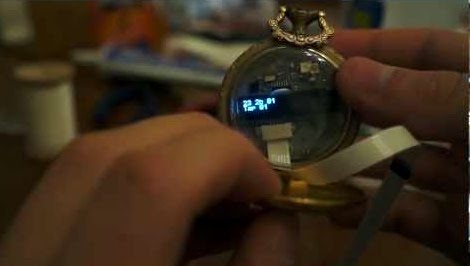Whether you own a pocket watch, want to own one, or just plain think they’re cool, [Fran’s] video on setting and regulating pocket watches provides a comprehensive overview on these beautiful works of mechanical art. After addressing the advantages and disadvantages between stem, lever, and key set watches, [Fran] cracks open her 1928 Illinois to reveal the internals and to demonstrate how to adjust the regulator.
Though she doesn’t dive into a full teardown, there’s plenty of identification and explanation of parts along the way. To slow her watch down a tad, [Fran] needed to turn a very tiny set screw about a quarter of a turn counterclockwise, slowing down the period: an adjustment that requires a fine jewelers screwdriver, a delicate touch, and a lot of patience. Results aren’t immediately discernible, either. It takes a day or two to observe whether the watch now keeps accurate time.
Stick around for the video after the jump, which also includes an in-depth look at a 1904 Elgin watch, its regulator and other key components.
Continue reading “Retro Time Tech: [Fran] And Pocket Watches”

![[Fran] on setting and regulating pocket watches](https://hackaday.com/wp-content/uploads/2014/08/franpocketwatches.jpg?w=600&h=450)










